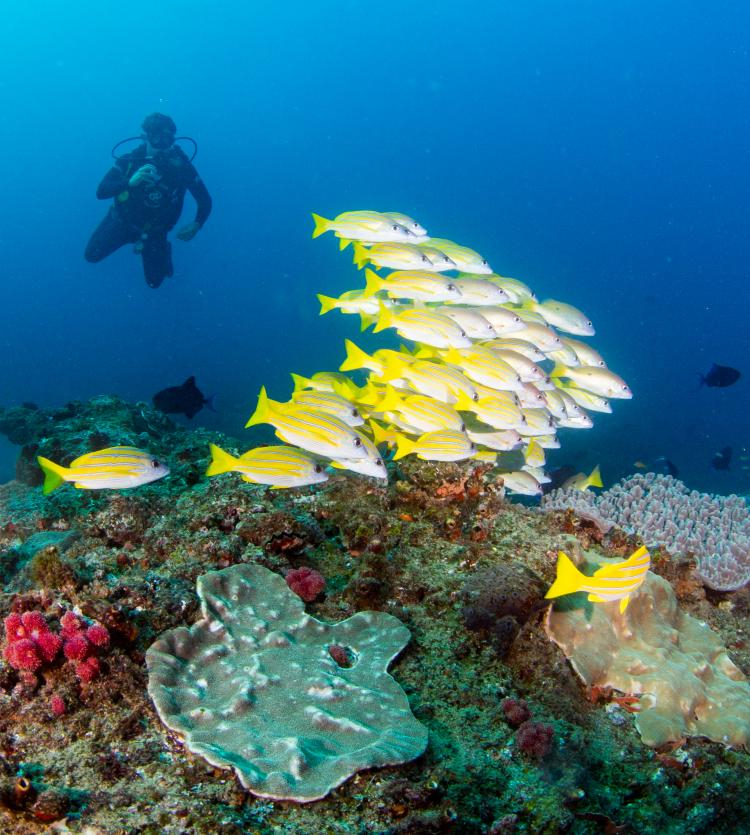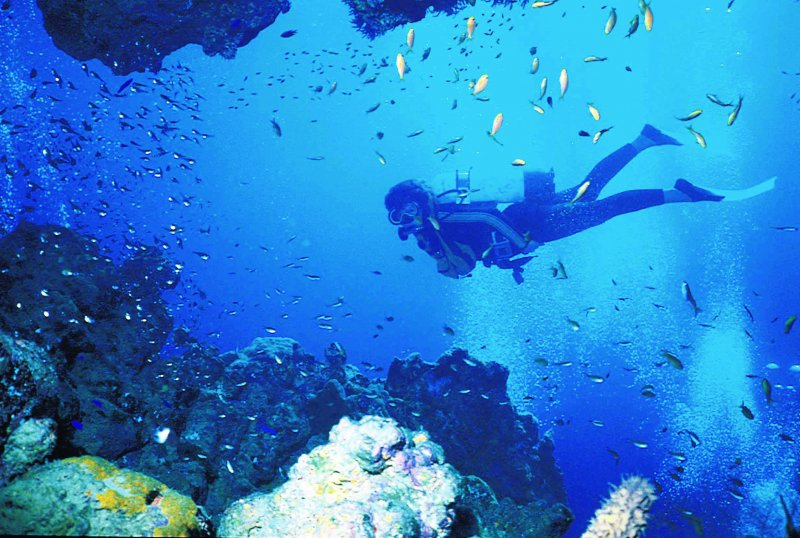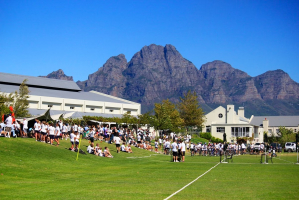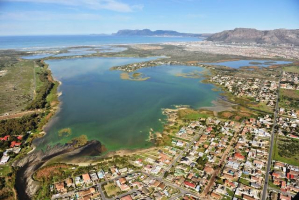Top 10 Dive Sites In South Africa
From tropical reefs and wreck dives to shark and cage diving, the South African coastline offers a diverse range of diving opportunities. You are guaranteed a ... read more...memorable experience no matter where you dive in South Africa. The country's long coastline is home to a diverse range of sea life as well as breathtaking reefs that will take your breath away. Let’s Toplist help you find the list of the best dive sites in South Africa!
-
Aliwal Shoal is the first name on the list of the best dive sites in South Africa. Aliwal Shoal, one of the world's top ten dive sites, is known for its shark sightings, including ragged-tooth sharks, tiger sharks, and hammerhead sharks. The Aliwal Shoal, the remains of an ancient sand dune about 5 kilometers out to sea off the coast of Umkomaas and half an hour's drive from Durban, was named after the near-sinking of the three-masted vessel "Aliwal", captained by James Anderson, in 1849. The marine life on Aliwal Shoal is diverse, with large predators among them. Between July and November, when the sharks congregate to mate, the Shoal is known for its abundance of Grey Nurse Sharks.
Manta rays, moray eels, stingrays, turtles, and schools of pelagic and coral fish have all been seen at this dive spot. On the shoal, there are numerous points of interest. Raggies Cave/Shark Alley, Pinnacles, Cathedral, South Sands, North Sands, Inside Edge, Outside Edge, Chunnel, and Manta Point are among the more well-known.
Location: Aliwal Shoal, KwaZulu-Natal, South Africa

Aliwal Shoal. Photo: wildimages.org 
Aliwal Shoal. Photo: wildimages.org -
Sodwana Bay is the next name on the list of the best spots to dive in South Africa that Toplist has compiled for you. Sodwana Bay is a scuba diving Shangri-La and is one of the most popular diving spots in the world. Sodwana Bay's reef system is thought to be around 80,000 years old, with numerous caves, overhangs, and pinnacles. The reef is home to over 1,200 known fish species, as well as invertebrates, turtles, rays, and sharks, with whale sharks (December to February), humpback whales (June to October), ragged-tooth sharks (December to February), and nesting sea turtles (December to February).
Seven Mile Reef is one of Sodwana's most popular diving spots. The reef, which is frequently listed in diving magazines as a top ten site, is home to a diverse array of fish species as well as spectacular drop-offs and coral formations. Seven Mile, with depths ranging from 16 to 24 meters, will leave an indelible impression on any diver.
Location: Sodwana Bay, KwaZulu-Natal, South Africa

Sodwana Bay. Photo: southafricaadventures.com 
Sodwana Bay. Photo: old.xray-mag.com -
Gansbaai, a popular tourist destination and fishing town, is known for its large population of great white sharks and as a whale-watching spot. Since around 1995, cage diving with great white sharks has been the main tourist attraction in Gansbaai. Cage diving excursions to Geyser and Dyer Islands begin at Kleinbaai Harbour near Gansbaai if you are brave enough to get in the water with these colossal predators. The channel between these islands, dubbed "Shark Alley", is home to the world's largest population of great white sharks.
While sharks can be seen all year, the best time to see great white sharks is from June to September, when the water is clearer. Other marine creatures seen include klipfish, catfish, toadfish, stingrays, butterfly rays, and eagle rays, as well as stingrays, sawfish, butterfly rays, eagle rays, and skates. The best time to dive in this spot is between June and September when the number of sharks is at its peak and visibility is at its best – 5-10m/16-32ft.
Location: Gansbaai, Western Cape, South Africa

Gansbaai. Photo: viator.com 
Gansbaai. Photo: ticketsntour.com -
Storms River Mouth is the next name on the list today. Storms River Mouth is a spectacular dive site in the beautiful Tsitsikamma National Park in the Eastern Cape. Visitors to Storms River will find not only ancient forests, mountain and coastal fynbos, hundreds of birds, interesting small mammals, and spectacular scenery, but also an intriguing 80-kilometer Atlantic Ocean coastline. The Storms River Mouth dive site, located within the Tsitsikamma National Park Marine Protected Area on the Garden Route, is a marine protected area filled with an abundance of marine life - a true underwater treasure.
Storms River scuba diving is a unique river dive with colorful soft corals, sea anemones, nudibranchs, and a variety of fish species, including red roman, mussel cracker, blacktail, sand sharks, stingrays, and even ragged-tooth sharks. Beautiful reefs, large game fish, and arguably the best diving experience in South Africa can be found at Storms River Mouth.
Location: Storms River Mouth, Eastern Cape, South Africa

Storms River Mouth. Photo: firstcarrental.co.za 
Storms River Mouth. Photo: locationscout.net -
Protea Banks is a fossilized sandbank located 7.5 kilometers out to sea from Shelly Beach. It is 6 kilometers long and 800 meters wide and lies at a depth of 27 to 40 meters. A variety of game fish, such as barracuda, tuna, and kingfish, call the reef home, attracting a wide range of predators.
The "Zambezi" (Bull Shark) population at Protea Banks is well-known; other sharks that frequent the area include ragged-tooth sharks, hammerheads, and blacktips. On a single dive, divers are almost certain to see up to five different shark species! The annual Sardine Run occurs in June and July when large schools of sardines migrate from the colder waters around the Cape to the warmer waters of KwaZulu-Natal. Game fish and other predators such as sharks, dolphins, whales, and Cape gannets all try their luck at catching the sardines. Divers dive to depths of about five to seven meters.
Location: Protea Banks, KwaZulu-Natal, South Africa

Protea Banks. Photo: proteabanks.co.za 
Protea Banks. Photo: afridive.com -
Port Elizabeth is one of the most magical places to visit for diving, with a wide variety of soft corals and marine life, dramatic reefs, and shipwrecks. Many large mammals, including humpback and southern right whales, dolphins, seals, and jackass penguins, migrate along the Port Elizabeth coast.
Avalanche Reef, a popular dive site, is a large reef with overhangs, deep crevices, and a densely populated coral and fish population. Red romans, bronze breams, and Jan Bruin are common fish along the reef, while the Chocolate-chip Dorid, Orange Ghost Nudibranch, Mauve False Plum Anemone, and Elegant Feather Star are among the many other interesting species. Aside from the abundance of colorful marine life and diverse corals, there is also a fantastic wreck dive. The best wreck dive in the area is the HMS Harlem, a navy frigate sunk in 1987. The Harlem, which is 20 meters below the surface, has created an artificial reef for diving, complete with nooks and crannies inhabited by sharks, corals, and a variety of fish.
Location: Port Elizabeth, Eastern Cape, South Africa

Port Elizabeth. Photo: storagebuddy.co.za 
Port Elizabeth. Photo: myscubadivinggearguide.com -
Knysna has some of the best diving in the world, both in the lagoon and out in the open sea. When the sea is rough, the lagoon is often warmer and sheltered, making diving in Knysna unpredictable and weather-dependent. For the most part, the water is clear and warm, with the best visibility during the winter months.
In the lagoon, there are numerous shallow-shore dive sites. However, the wreck of the Paquita, a German iron vessel that sank in 1903, is one of the more interesting dives. The site, which is located just inside the Knysna Heads, is subject to strong currents and can only be dived at low tide. Sea whips and fans, basket stars, colorful sponges, and soft corals cover the wreck, which is home to a large number of fish. Outside the Knysna Heads, there is a beautiful area with many overhangs, caves, and canyons to explore. The underwater world is alive with sponges, corals, and fans, and the marine life ranges from tiny seahorses to large predators like sharks.
Location: Knysna Heads, Western Cape, South Africa

Knysna Heads. Photo: visitknysna.co.za 
Knysna Heads. Photo: visitknysna.co.za -
Rocktail Bay is the next name on the list that Toplist has compiled for you. Rocktail Bay is one of the best dive sites in South Africa, as well as one of the best diving spots in the world. The bay was named after the Rocktail, a trawling ship that was wrecked offshore.
Rocktail Bay is now known for its pristine dive sites. The warm, nutrient-rich waters of the Agulhas Current support the coral reefs of iSimangaliso Wetland Park, making it one of the world's best diving destinations. The loggerhead and leatherback turtles that come here to lay their eggs on the sandy beaches have made Rocktail Bay famous. Pineapple Reef in Rocktail Bay is home to clownfish, domino fish, and porcelain crabs, as well as moray eels, stingrays, and large schools of fish. Grey reef and tiger sharks, manta rays, and ragged-tooth sharks are among the seasonal visitors to the reef.
Location: Rocktail Bay, KwaZulu-Natal, South Africa

Rocktail Bay. Photo: xray-mag.com 
Rocktail Bay. Photo: firstcarrental.co.za -
Mossel Bay is the next name on the list of the best dive sites in South Africa that Toplist would like to introduce to you. Mossel Bay has something for everyone, both on land and underwater, with its stunning scenery and numerous coastal towns to visit. Some of the most fascinating underwater landscapes can be found in Mossel Bay.
There are dives to suit all levels of the scuba diver, with its colorful reefs, spectacular drop-offs, abundant marine life, and the ability to cage dive with Great White Sharks. If you manage to visit this incredible location, make sure to go on a night dive, where you will be able to see a variety of wild and wacky creatures that emerge once the sunsets. Scuba diving around Mossel Bay is fascinating due to the abundance of marine life. It's a great place to see white-tip sharks. In addition, anemones, seals, octopi, crayfish, crabs, and damselfish abound at local dive sites.
Location: Mossel Bay, Garden Route, South Africa

Mossel Bay. Photo: skydivemosselbay.com 
Mossel Bay. Photo: southafricaliving.com -
Cape Peninsula, Western Cape is the next name on the list of the best dive sites in South Africa that Toplist would like to introduce to you. This regional dive guide is designed to provide information to experienced scuba divers who want to plan dives in the waters of the Cape Peninsula and False Bay, whether they are locals or visitors. There are over 100 dive sites in the Cape Peninsula and False Bay region, ranging from wreck dives, reef dives, and kelp forests to seal dives and shark cage diving. The temperature differences between the two oceans are responsible for the incredible diversity of underwater life and scenery.
Year-round diving is available in False Bay, with wreck, seal, and reef dives among the options. Big boulders covered in an array of colorful sea sponges, fans, anemones, and soft corals characterize the rocky reefs of False Bay.
Location: Cape Peninsula, Western Cape, South Africa

Cape Peninsula. Photo: genk.vn 
Cape Peninsula. Photo: africanbudgetsafaris.com































